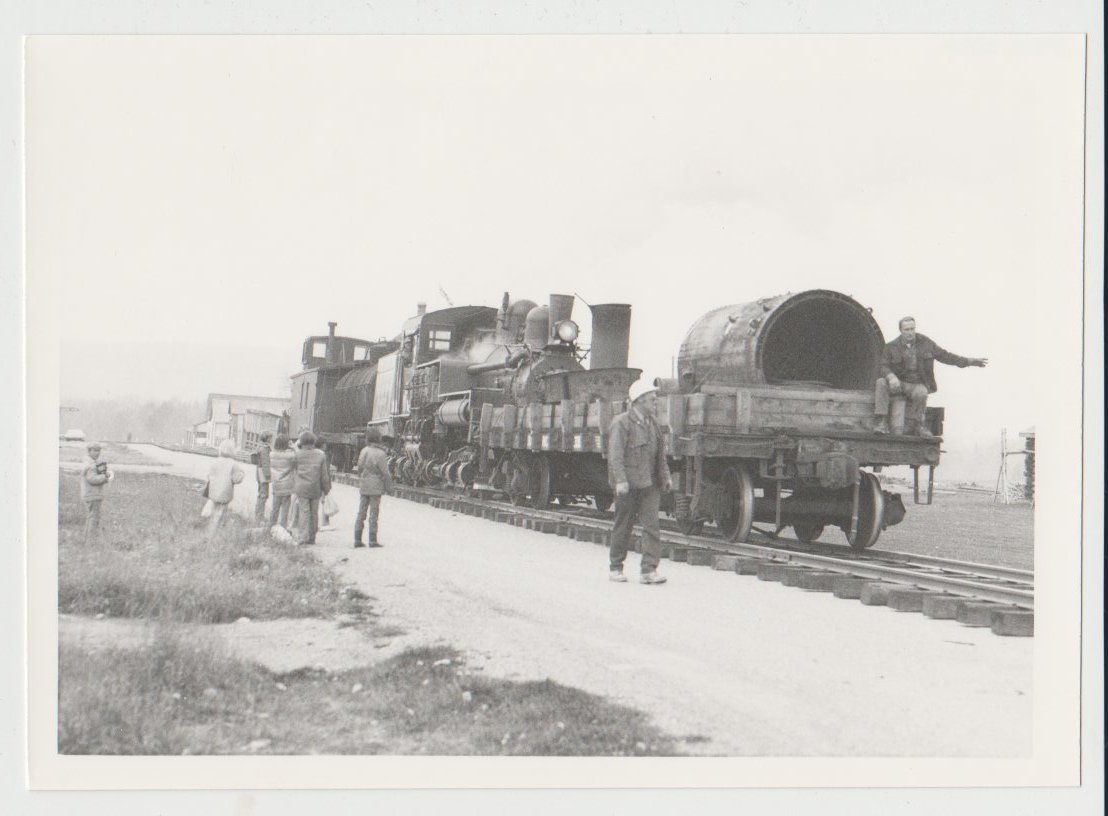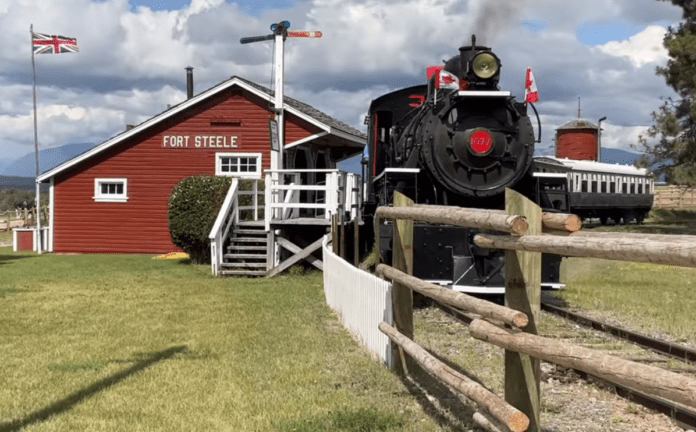Age is just a number when it comes to Fort Steele’s locomotive #1077, as it took to the rails to officially ring in its 100th year of service.
Repairs and maintenance were completed in time for the train to take its first passengers on Father’s Day, June 18.
Built in 1923 by the Montreal Locomotive Works, the train engine was first put to use by logging companies to move products around.
It entered service as a log-burning engine under Cathels & Sorenson’s logging works before trading hands a few times.
It was sold to Renfrew Logging company, then the Hemmingsen-Cameron company.
According to Fort Steele, the train was too big for Hemmingsen-Cameron and only served for a few years before being stored in a shed.
The engine traded hands yet again to the Victoria Lumber and Manufacturing Company and relocated to Chemainus, where it was converted to an oil-burning engine.
It was renumbered to the #1077 and sold yet again.
“It worked for MacMillan Bloedel on Vancouver Island for quite a few years before it was retired,” said Gene Roshau, Fort Steele department manager and locomotive engineer. “They donated it to the B.C. government where it sat as a static display for about 10 years, until 1979 or ’80. They donated to Fort Steele Heritage Town and it’s been here ever since.”
According to Fort Steele, the #1077 was the last made-in-Canada logging steam engine in operation when it was taken out of service.
Prior to being put back into service, the train’s boiler was rebuilt by Herb Harkins at CP Rail’s Drake Street Roadhouse in Vancouver.
In honour of Hawkins’ work, the #1077 was decorated with a plaque dedicated to the man behind its restoration.
The work of keeping the 100-year-old train in service is now in the hands of Roshau and the crew at Fort Steele.
“Every five years we rip it right down and we get boiler testers to come in and do a magnetic particle contrast test on the inside of the firebox on welds and cracks on the tubes,” said Roshau.
A magnetic particle contrast test is used to find any faults in the locomotive’s engine so the team can focus their efforts where repairs are needed.
“We also do an ultrasound every six to eight inches of the boiler to find out sheet metal thickness, and that gets sent to an engineer who determines how much pressure we can operate with,” explained Roshau. “He’ll determine just by the thickness of the metal whether we can go back to 185 psi or not.”
Replacement parts for a 100-year-old engine can be hard to come by. Roshau explained that the process is more complicated than simply going to an automotive shop or junkyard.
“The last thing we did was a horse trade with Heritage Park in Calgary. They needed a compressor we had, and we traded that for some brake shoes that we needed,” said Roshau. “For other things, if it’s not too big of a project, we can make them ourselves.”





